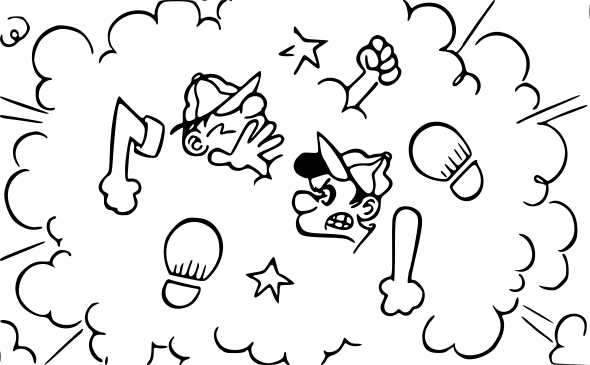This is obsolete.
For the current rule, see Aiming.
Old, historical post follows:
Here’s a house rule I designed for all weapons with ammo. I’m going to talk about “arrows” but it applies to throwing daggers, javelines, thrown axes, crossbow bolts etc too.
To aim at someone you can see, roll your attack vs their AC. Their HP loss represents you getting a better aim on them, making it easier to take them down once you do release that arrow. A sequence of missed attack rolls and successful attack rolls might mean you lose your aim, you regain your aim even better etc.
In a tight spot, you can put up the heat on the pressure boiler, roll your attack vs their AC. Their HP loss represents them getting that much loser to losing the fight. They’re squirming away from you and perhaps into the hands of your ally.
Over the rocks and strewn bodies you steady yourself, twirling around between enemies, and try to get to a place where you can make a good shot. Roll your attack vs their AC. Their HP loss represents you gaining momentum.
No more weak shots. Every notched arrow a killing blow. You draw your string – take a breath and aim for a moment – then release it, and they die.
And, the rule is 100% optional. If you think it’s cooler to blast that owlbear with lots of arrows making it look like a porcupine, go for it. If you want to describe how missing a shot makes your archer more motivated, go for it. Don’t fear of losing out, either way, you can recover that amount of arrows after the fight.
You can save yourself some HP in the long run (and, in the Dramasystem mashup, you’ll get tokens), if you just surrender right away. (However your captors might kill you so judge the situation carefully.)
HP is the clock of destiny! HP isn’t any one thing. It’s any and all things that keep you in the fight. Injuries, we have the Lingering Injuries table. Death, we have death saves & exhaustion. So HP are not those. HP isn’t just stress, hope, fatigue, scratches, position, footing, fate, destiny, favor of the gods, bravery, luck — it’s any and all things. Any one of those things can put you closer to 0.
This has worked well for sword fighters.
Now archers can get in on the same action!
You still need mêlée for non-lethally capturing enemies — if you accidentally put them to 0 when you try to aim, threaten, maneuver, that means you did release that arrow. But, you can point your bow at them, and then if you can close in on them, you or one of your allies can capture them with a weapon or with unarmed attack, made all the easier because they were covered by you.
You still get disadvantage when you’re in a mêlée group. And so on.
The purpose of this rule is for more things to make sense, not less. The words we use when we describe fights and tense situations matter.
The idea is to be able to, when we want to, be more precise about the connection from what’s going on in the game world to the game’s math, and the connection back to consequences in the game world. Sometimes you just roll out a fight, and what’s going on in the game world is vague, and it’s just a big veil of clangs and screams and dust:

and you only see after the dust settles who lived and who died. And old D&D historically supported this mode well. What mattered what what you brought to bear, whether or not to engage, how you entered the fight — then the fight itself was just a blur. (The original combat round was one full minute, with the same rules! So it was very abstracted compared to the six second rounds that came later.)
But sometimes every blink, every hesitation, every sure-footed step you take matters. To be able to better go back and forth between these modes as often and as seldom as we wish is a treasure and I want to respect it.